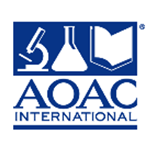SAMPLING
A proper sampling must ensure samples representative, unaltered, without any contamination.
A poor sampling can destroy the value of the most reliable analysis and may lead to incorrect conclusions.
The representativeness of samples is not always given.
Adulteration and antibiotics in milk collection stations, pesticides in fruit packaging facilities, aflatoxins in a load of nuts or ochratoxins in grapes in wineries are never equally distributed.
A poor sampling can destroy the value of the most reliable analysis and may lead to incorrect conclusions.
The representativeness of samples is not always given.
Adulteration and antibiotics in milk collection stations, pesticides in fruit packaging facilities, aflatoxins in a load of nuts or ochratoxins in grapes in wineries are never equally distributed.
Deteriorations and contaminations of samples may occur from sampling containers and from unappropriate transportation conditions. A glass container is unsuitable for the analysis of heavy metals and a plastic bottle can contaminate a sample with phthalates substances or other organic micropollutants.
The sampling method, the ensurance of representativeness, the quantity of the sample, the preservation and transportation conditions are determined by legislation and relevant standards.
The authorised laboratory's personnel follows specific reference methods for sampling. They can also assist you, in case you prefer to proceed with the sampling yourself, by providing all the necessary information and the appropriate containers for the collection and transportation of the samples.
Some common and simple sampling cases are described below. For more complex and specialized samplings we are always at your disposal in order to provide the proper instructions.
- Food Sampling instructions
- Water Sampling instructions
- Wastes Sampling instructions
- Soil Sampling instructions
- Leaves Sampling instructions
- Poultry Sampling instructions
The sampling method, the ensurance of representativeness, the quantity of the sample, the preservation and transportation conditions are determined by legislation and relevant standards.
The authorised laboratory's personnel follows specific reference methods for sampling. They can also assist you, in case you prefer to proceed with the sampling yourself, by providing all the necessary information and the appropriate containers for the collection and transportation of the samples.
Some common and simple sampling cases are described below. For more complex and specialized samplings we are always at your disposal in order to provide the proper instructions.
- Food Sampling instructions
- Water Sampling instructions
- Wastes Sampling instructions
- Soil Sampling instructions
- Leaves Sampling instructions
- Poultry Sampling instructions
If sampling wish to be carried out by our own authorized staff please click here.





